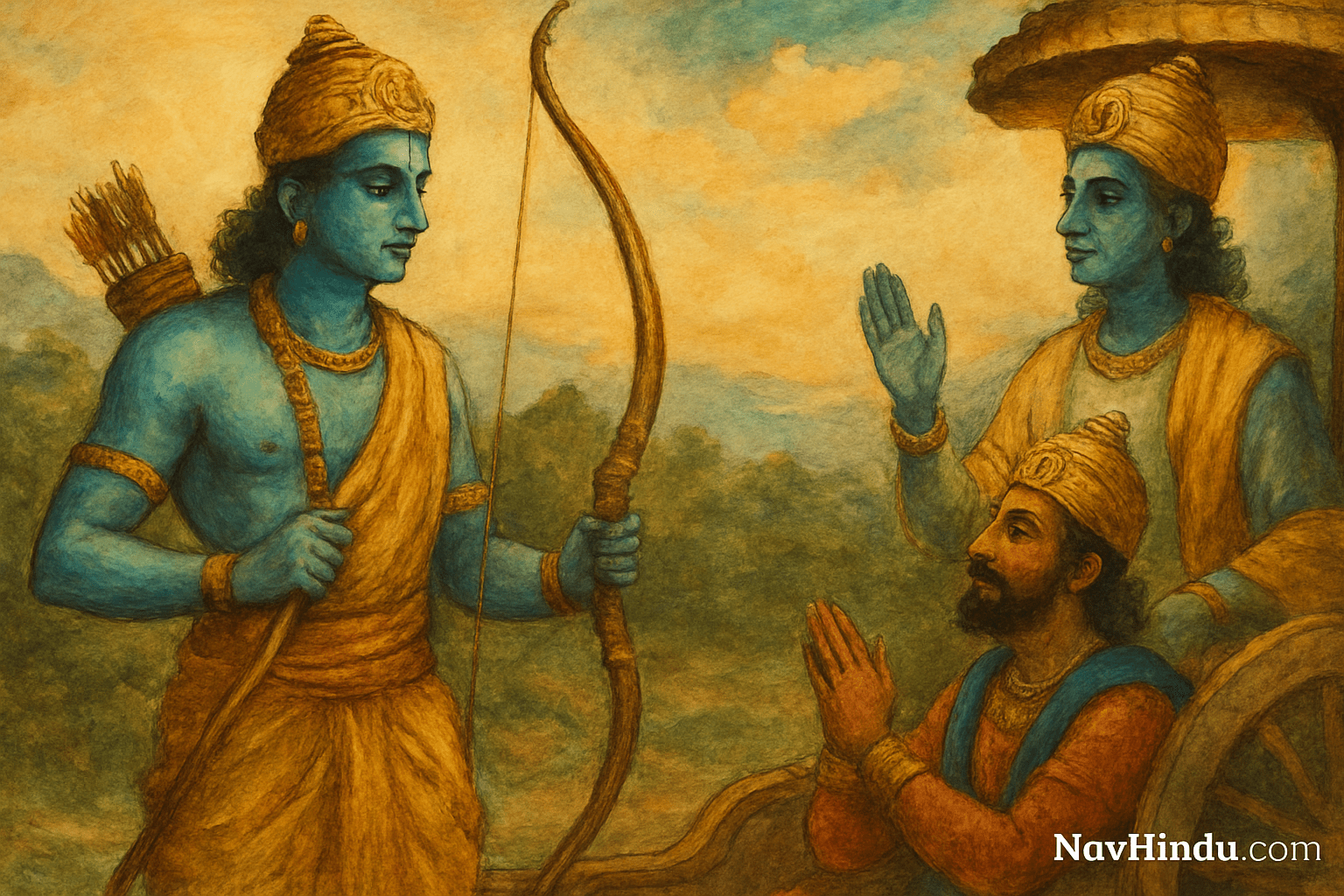Most people read the Ramayana and Mahabharata for their gripping stories—divine battles, noble heroes, and dramatic turns of fate. But beneath the visible drama of kings and wars lies something even more powerful: timeless wisdom coded into the characters and events of both epics.
While separated by thousands of years and set in different yugas, the two epics are mirrors of each other. Their surface narratives differ, but the spiritual lessons at their core remain astonishingly aligned—as if the same soul-stirring message is being told twice, in two different tongues.
Here are ten such hidden messages—shared by both the Ramayana and Mahabharata—that go beyond plot to offer guidance on how to live, lead, love, and liberate.
1. Dharma Is Not One-Size-Fits-All
In both epics, dharma isn’t a fixed rulebook. It changes with roles, relationships, and inner evolution.
- Rama chooses exile to honor his father’s word—his dharma as a son.
- Krishna advises Arjuna to fight—his dharma as a warrior.
Same root concept. Different manifestations.
Message: Dharma must be interpreted based on context, not blind tradition. Following your dharma may mean going against society, family, or even personal emotion.
2. Ego Destroys Even the Most Powerful
Ravana was brilliant, scholarly, and a master of the Vedas.
Duryodhana was a fierce warrior and excellent administrator.
Yet both fell—not from weakness—but from ego, arrogance, and entitlement.
Both epics show that unchecked ego makes even the wise act foolishly, and no amount of talent or power can save one from its consequences.
Message: Spiritual strength begins with humility. Pride is the first crack in a kingdom—within or without.
3. Victory Without Virtue Is Hollow
Rama wins Lanka, but only after painstaking adherence to dharma—even when it costs him greatly.
Yudhishthira wins Hastinapur, but the war leaves him broken. His inner peace doesn’t come from victory—it comes from penance and spiritual surrender.
In both stories, winning isn’t celebrated with fanfare—it’s followed by reflection, grief, and detachment.
Message: True victory is not external. It is the ability to remain ethical through chaos—and emerge with your soul intact.
4. Women Are Not Supporting Roles—They Are Catalysts
Sita, Draupadi, Kaikeyi, Kunti, Mandodari, and even Surpanakha are not passive characters. Their choices shape the trajectory of both epics.
- Sita’s abduction leads to the war in Lanka.
- Draupadi’s humiliation lights the fire of Kurukshetra.
- Kunti’s decisions alter the destinies of kingdoms.
Message: The feminine energy (shakti) is not ornamental. It is generative, decisive, and pivotal—whether in peace or in war.
5. Attachment Leads to Blindness
Dasharatha’s attachment to Kaikeyi leads him to exile Rama.
Dhritarashtra’s attachment to Duryodhana blinds him—literally and metaphorically—to justice.
Even great kings fall when love turns into moha—deluded attachment.
Message: Affection, when clouded by fear or control, becomes poison. True love must allow space for truth to breathe.
6. Karma Spares No One—Not Even Gods and Kings
Every character pays for their choices—no matter how noble or divine.
- Rama suffers separation from Sita, not because he is flawed, but because karma ripens in all lives.
- Karna is abandoned as a child, and lives with rejection despite his greatness.
- Bhishma, bound by his vows, is cursed to suffer a prolonged death.
Even avatars of Vishnu face trials—not as punishment, but as part of the divine rhythm of balance.
Message: No one escapes their karma—but everyone has the power to purify it.
7. Vows Are Sacred—But Can Become Shackles
Bhishma’s vow of celibacy creates generations of chaos.
Rama’s vow to never remarry leads to Sita’s lonely suffering.
In both cases, vows born of virtue become prisons when flexibility is lost. Dharma becomes dogma.
Message: Commitment is sacred—but wisdom lies in knowing when to adapt. Rigid ideals can destroy fluid reality.
8. Adharma Can Wear a Mask of Righteousness
- Ravana sees himself as the rightful ruler of Lanka, who just wants to avenge an insult to his sister.
- Duryodhana believes he’s protecting his birthright against undeserving brothers.
Neither think they are villains.
Both epics show that evil doesn’t always arrive in horns and red eyes—sometimes, it wears a crown and quotes scripture.
Message: The real battle is not between good and evil—but between illusion and clarity.
9. Divine Help Arrives When Effort Is Sincere
- Rama receives aid from Hanuman, Sugriva, Jambavan—none of whom were traditional warriors.
- Arjuna receives the Bhagavad Gita from Krishna—not because he asked—but because he was broken enough to listen.
In both epics, divine grace walks in when the ego walks out.
Message: You don’t have to be perfect. You just have to be open. When the seeker becomes sincere, the teacher appears.
10. Everything That Happens Serves a Higher Plan
At first glance, many events seem tragic or unfair.
- Rama’s exile.
- Sita’s trial by fire.
- Abhimanyu’s brutal death.
- Karna’s constant rejection.
But beneath the heartbreak lies a grand unfolding. Each sorrow sets the stage for a greater revelation.
Message: The universe has a memory, a rhythm, and a purpose. Nothing is wasted—not your pain, not your loss, not even your mistakes.
Why These Messages Still Matter
The Ramayana and Mahabharata aren’t relics. They’re living mirrors. They reflect not ancient kingdoms, but eternal truths about power, love, failure, and faith.
Whether it’s Rama choosing the forest over the throne, or Arjuna collapsing on the battlefield, these stories hold a message we all need today:
Right action isn’t easy. But it’s always possible.
And no matter how far you fall, you are always one choice away from your dharma.
